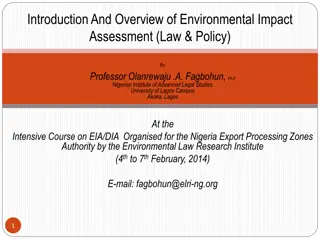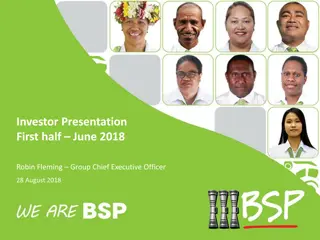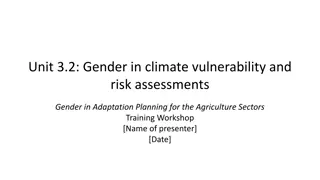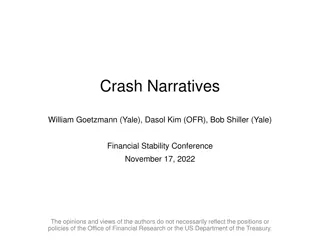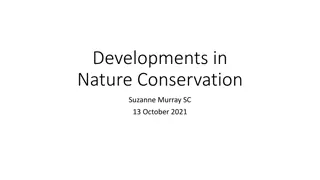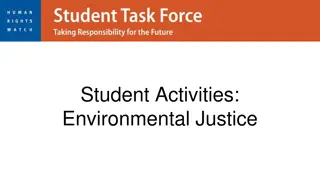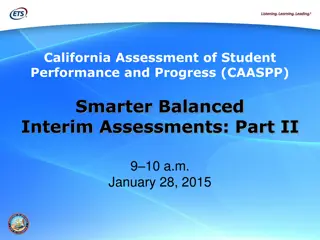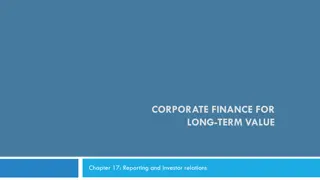Challenges in Environmental and Social Impact Assessments for Investor Decision-Making
Environmental and Social Impact Assessments (ESIAs) face significant challenges, impacting data reliability and decision-making for investors. Issues include outdated information, flawed algorithms, lack of stakeholder engagement, and minimal adherence to regulatory standards. Companies struggle with FPIC, stakeholder mapping, and community definitions. Improved education and early ESIA focus could mitigate costs and promote better project outcomes.
Download Presentation

Please find below an Image/Link to download the presentation.
The content on the website is provided AS IS for your information and personal use only. It may not be sold, licensed, or shared on other websites without obtaining consent from the author.If you encounter any issues during the download, it is possible that the publisher has removed the file from their server.
You are allowed to download the files provided on this website for personal or commercial use, subject to the condition that they are used lawfully. All files are the property of their respective owners.
The content on the website is provided AS IS for your information and personal use only. It may not be sold, licensed, or shared on other websites without obtaining consent from the author.
E N D
Presentation Transcript
Joanne Bauer Co-Founder, Rights CoLab Adjunct Professor of International Affairs Columbia University
Marena Renovables Windfarm Oaxaca, Mexico Renovables
IM STILL AFRAID. THOSE SOLDIERS CAME TO BRUTALIZE US. THEY CAME TO TAKE OUR LAND. -- SIRA B R T
I SIGNED OVER MY LAND WITH A GUN POINTING AT ME. I HAD NO CHOICE. IF YOU HAD A MAN STANDING OVER YOU WITH A GUN, WHAT WOULD YOU DO? -- BASSY CAMARA
Much of the data investors rely upon is spotty and outdated re: human rights algorithms flawed Information & Data Problems
Environmental Social Impact Assessments are often weak I do a lot of ESIAs and I agree. Companies often don t know how to conduct ESIAs In some cases the company does not seem to be familiar with the IFC Performance Standards. Companies just want to produce the report that is going to help them get the debt financing. FPIC is way more complex, especially where regulatory requirements are not that robust. How do you reach stakeholders in this way? Who are the people without a voice? How do we engage them? Most equity investors also don t know and aren t aware of the problems with ESIAs. In the end these projects create more costs for the developers. If there was something to encourage an educated and better ESIA in the first place if all of this could happen earlier - we would avoid all this. Stakeholder mapping is not done well. You need a record that you tried to build as much consensus as you could. Document that you ve done that in good faith. How do we define communities? It s very hard to assess these situations. Rarely black and white. Information & Data Problems
Engage meaningfully with NGOs and communities to find out ways to manage and mitigate risk. Develop channels for civil society to communicate directly with the firm about land rights in relation to: 1) specific risks in asset classes, industries, etc. before investments take place; 2) specific cases and complaints after investments take place. Publish information about who to contact for NGOs and impacted communities wishing to alert the fund to negative human rights impacts. Bring more human rights expertise in house mainstream human rights capacities and responsibilities throughout the firm. Strengthen policies and corporate reporting frameworks (e.g. SASB) regarding land rights and forced evictions and insist that companies report against them. Take advantage of resources being develop by civil society, such as Equitable Origins FPIC 360 tool. Join a CSO-Investor Dialogue Table! Recommendations for investors (and data providers)







